Source: TOP Innovation Zone Research Institute
Author: Innovation Zone Research Group
With the advent of ChatGPT, we are witnessing a new round of artificial intelligence revolution. This revolution not only changes the relationship between humans and machines, technology and industry, virtual and reality, but also brings profound challenges to the social and civilizational order of human society.
To seize these opportunities or to meet potential challenges, it depends not only on technological capabilities, but also on "where" you are.

Drought kills drought, flood kills flood
Recently, Forbes released the list of the top 50 artificial intelligence companies: 43 of the listed American companies are from only four states, with California being particularly prominent, having as many as 35 companies; New York (4), Texas (2), and Massachusetts (1), with one company operating completely remotely. None are located in the Rust Belt, Midwest, or South.
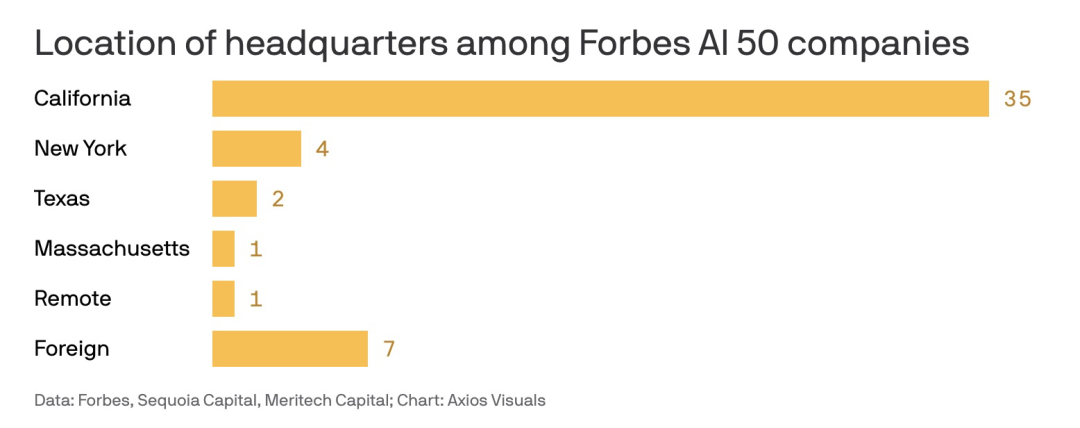
In other AI lists, we can also see this high degree of geographical concentration. In another IVP Enterprise 55 list, 18 are from San Francisco, California.

The top U.S. think tank, the Brookings Institution, recently published a detailed report, which found that AI activity in the United States is highly concentrated in "superstars" - the San Francisco Bay Area (including SF metro and San Jose metro), and 13 "early adopters."
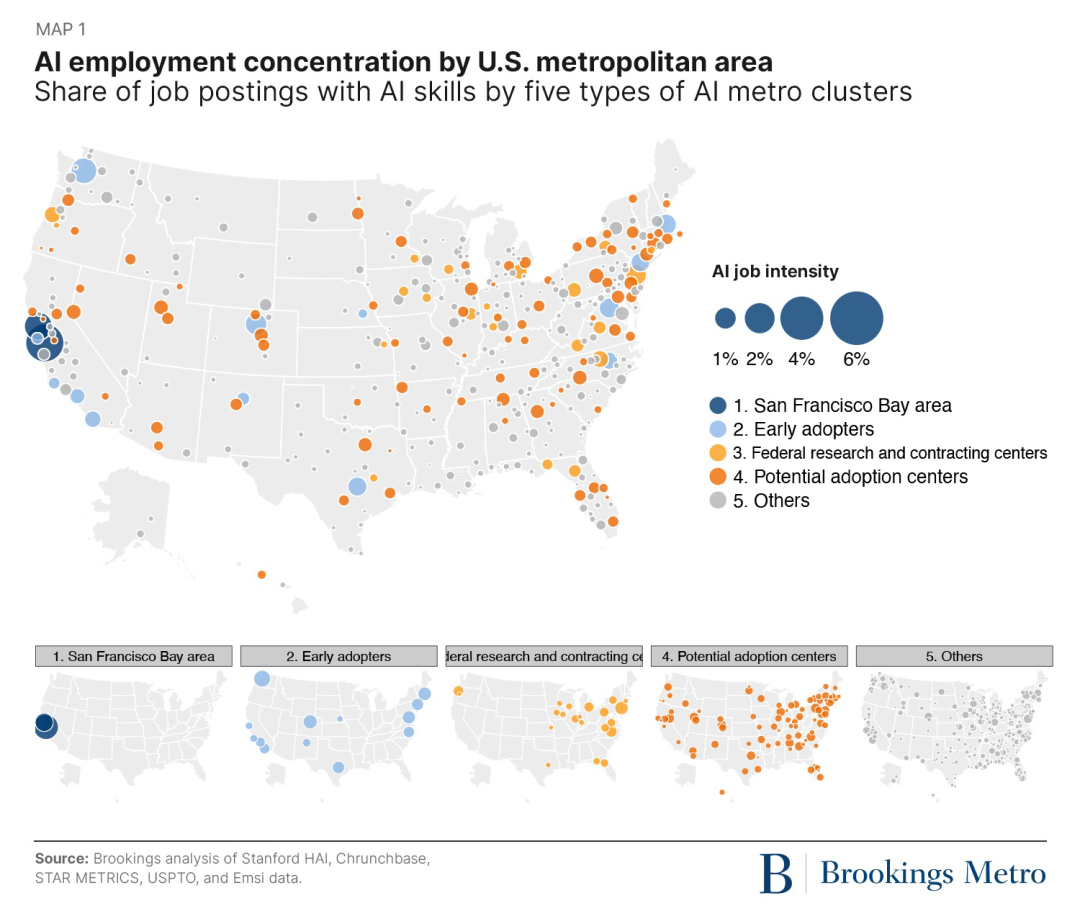
According to job posting data from Lightcast from January 2023 to May 2023, 60% of new generative AI job postings are distributed only in the above 15 metropolitan areas. At the same time, in the past 10 months, only six metropolitan areas (San Francisco, San Jose, New York, Los Angeles, Boston, and Seattle) accounted for nearly half (47%) of generative AI job postings in the United States.
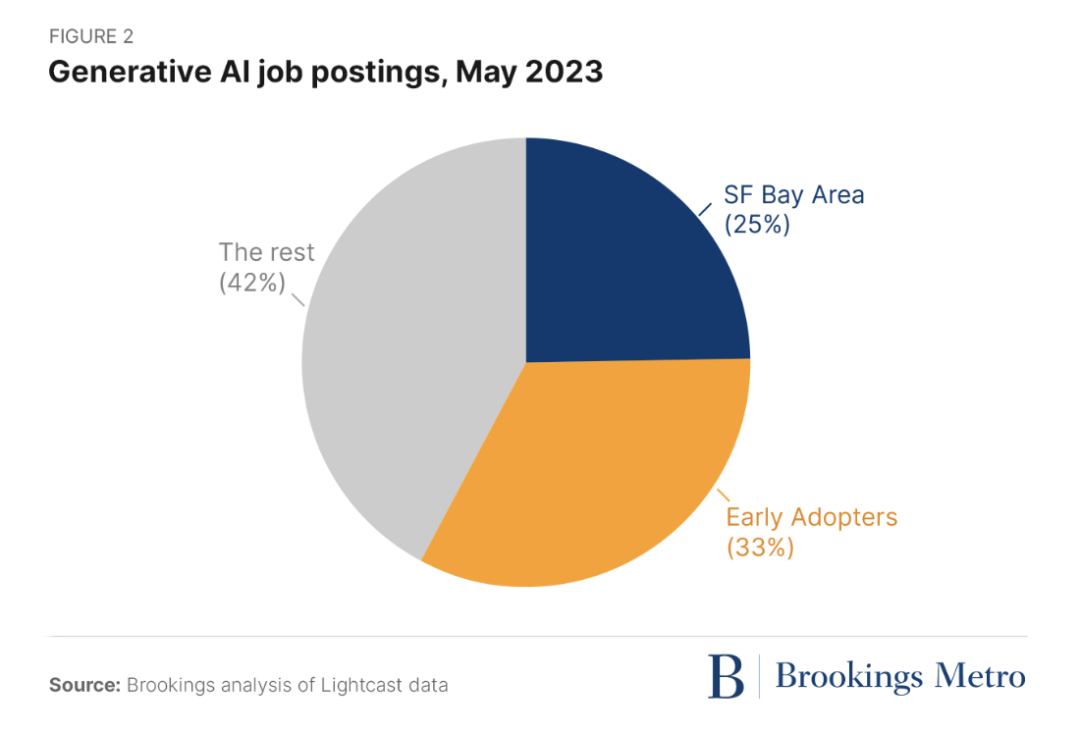

Network effect
Globally, employment in the technology industry continues to grow, but upon closer examination, it is found that the industry (especially the technology industry) continues to concentrate geographically rather than "diffuse."
Now that technological development has entered the era of "artificial intelligence and machine learning," especially in the early stages, it "requires" companies to concentrate rather than disperse - the clustering of companies not only provides them with more resources and opportunities, but also strengthens their cooperation and competitive relationships.
UC Berkeley economics professor Enrico Moretti, after extensive research in urban economics, has come to a solid conclusion: the high-tech industry in the United States is increasingly concentrated in a few expensive coastal cities.
In his book "The High-Paying City," Enrico Moretti mentioned a phenomenon - the Great Divergence. The core point is that cities that excel in the entrepreneurial and technology-driven innovation economy win talent and opportunities, and due to the Matthew effect, this gap is constantly widening, leading to a "winner-takes-all" situation.
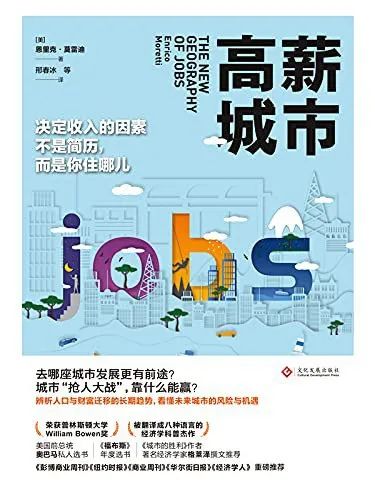
And once these cities become "winners," they stay at the table - a report on 29 disruptive technologies over the past 20 years found that the distribution of these high-tech jobs remains highly concentrated - for example, in computer science, semiconductors, and biochemistry, the top ten cities respectively account for 70%, 79%, and 59% of all inventors, and they consistently maintain their lead.
One of the reasons for this is the resilient network effect:
Take the Bay Area for example. During the pandemic, many workers and entrepreneurs were planning the "Silicon Valley Exodus" - high housing prices, exorbitant cost of living, congestion, traffic jams, intolerable high crime rates, and the ongoing homeless problem, not to mention high taxes…
But as the global center of technology and innovation, the Bay Area has long nurtured a strong and resilient innovation network: it has a large number of technology companies, startups, venture capital firms, and top research institutions - the value of the ecosystem comes from the interaction of multiple interdependent groups. When the elements of the ecosystem are more diverse, the interactions become more complex.
And you have to admit that the network is the most difficult to replicate in an ecosystem, and it is also the easiest reason for the "winner-takes-all" situation to persist.
Of course, in the field of AI, there are some unique challenges.
First, it requires high talent. In theory, as long as there is sufficient expertise, any sufficiently intelligent person can create generative artificial intelligence, whether they are in the Bay Area or in Shanghai.
Second, it requires massive funding. Training AI models requires a large amount of computing power, which means massive funding.
Silicon Valley has two of the world's top universities in AI research (Stanford University and the University of California, Berkeley) and many of the world's leading AI research and development investors, including Alphabet, Facebook, Salesforce, and NVIDIA - this "big company support + top talent doing the work" formula contributed to a large number of the most cited AI papers in 2022.
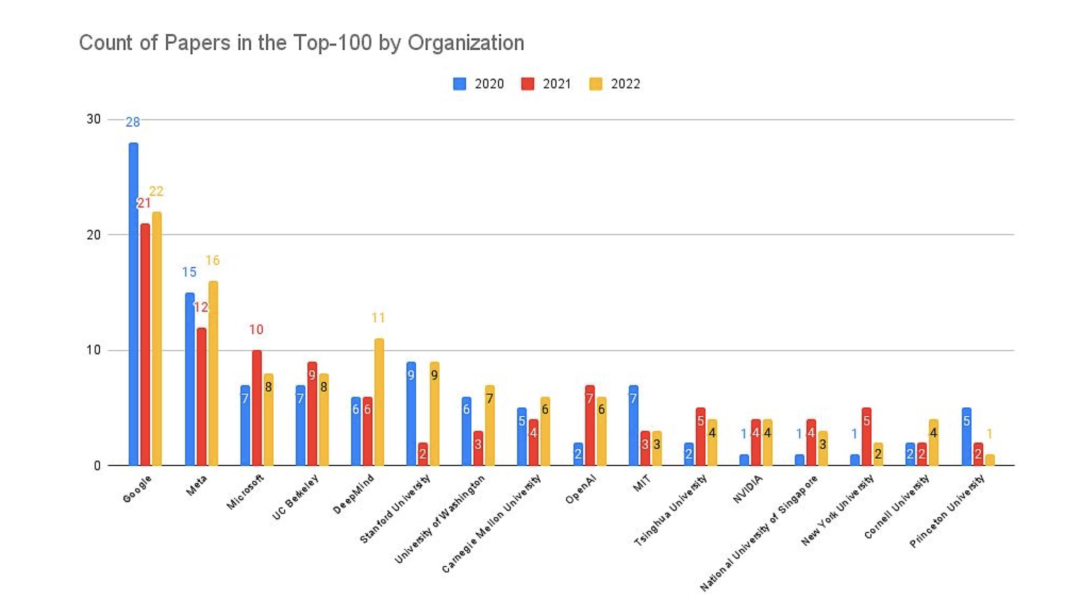
As more AI companies are established in California, a strong network effect has been formed here. This effect further strengthens the Bay Area's dominant position in the AI industry, making it the preferred location for tech companies and talent.
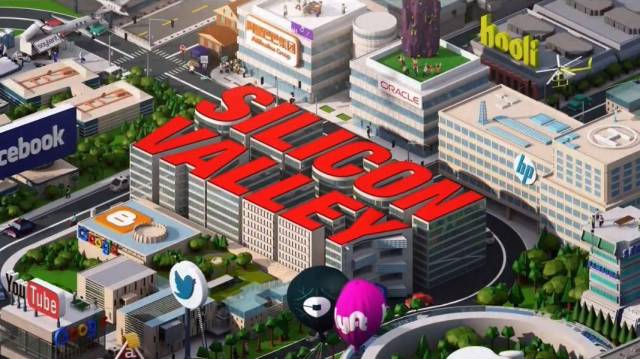

"AI common prosperity"
It seems that the AI industry will also become another highly concentrated industry centered on the Bay Area.
At this point, the U.S. government has decided to implement "AI common prosperity" because it believes that imbalanced distribution may exacerbate social inequality and lead to economic stagnation in certain areas.
The approach is to fund AI research, provide education and training, and formulate policies conducive to innovation and fair competition to help a wider range of regions and people benefit from the benefits of AI.

Since 2020, the NSF has established a distributed network of National AI Research Institutes at universities across the country. To date, nearly $500 million has been invested over five years, with activities in 19 cities, helping to build a talent pool for AI and establishing connections with 37 states.

Image source: https://www.nsf.gov/pubs/2023/nsf23610/nsf23610.pdf
The academic community in the United States is increasingly emphasizing the success of "place-based industrial policy" - after all, the space race initiated by the U.S. government was a policy-oriented success story.
In addition, with the reshoring of manufacturing to the United States, such as the "Regional Technology and Innovation Center" program included in last year's "CHIPS and Science Act," many people realize that:
To restore the vitality of the U.S. industrial base, there needs to be more AI-based innovation in more places, and if AI becomes more concentrated and other areas are marginalized, the industrial base will also be negatively affected.
Therefore, the 117th Congress has proposed an $800 billion "place-based" industrial policy measure, which includes several explicit investment plans aimed at improving the highly concentrated geographical distribution of AI in the country.
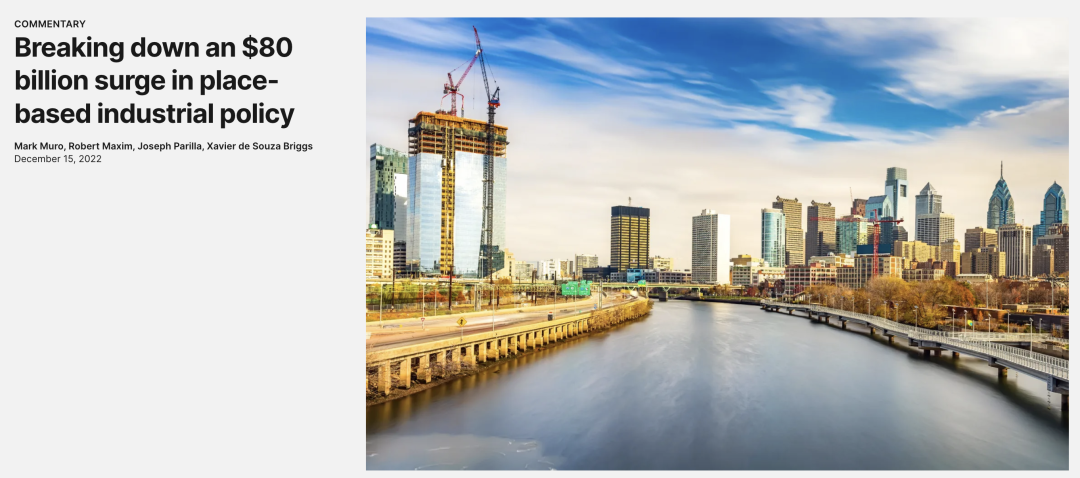
U.S. version of industrial policy
AI + Industry
Currently, the deployment of generative artificial intelligence is still in the early stages, but it is progressing very rapidly: the deep integration of technology and industry is happening globally. Generative artificial intelligence is no longer just a tool for providing information content services. It has become the "technical foundation" for multiple industries such as finance, healthcare, and autonomous driving, and is expected to become the "technical infrastructure" of future society.
China's opportunities and challenges in this regard are enormous.
At the recent 2023 China Computing Power Conference, many experts expressed that compared to the universal large models represented by ChatGPT, China's shortcomings in this area are quite apparent: first, it started late, with relatively little technological accumulation and research and development investment; and it must be acknowledged that training universal large models requires a large amount of data. Although China has a huge base of internet users, there is still a certain gap compared to foreign tech giants in the collection and processing of multilingual and multicultural data.
However, China's opportunity lies in industry-specific large models.
As early as 2017, Kevin Kelly predicted: "The formula for the next 10,000 startups is that you take something and you add AI to it. We’re going to repeat that by a million times, and it’s going to be really huge."
Industry-specific large models are large-scale deep learning models designed specifically for a particular vertical industry. Industry-specific knowledge and experience can be integrated into the model to improve its quality and accuracy.
China has the most complete industrial chain and a huge physical industrial base in the world, covering almost all industry sectors from agriculture, manufacturing to services. This provides rich application scenarios and real data for industry-specific large models, allowing the models to be optimized to better meet actual business needs.
At the same time, China has a huge market size, providing broad application space for various technologies and products. Industry-specific large models have enormous market potential in China, with extensive application prospects in both the technological transformation of traditional industries and the innovative development of emerging industries.
As China's economy undergoes transformation and upgrading, every industry is facing the pressure of technological transformation and innovation. Industry-specific large models, as a technology that can provide precise services for specific industries, can meet this demand.
For example, with the automation and refinement of the manufacturing industry, traditional manual quality inspection methods are no longer able to meet the needs of large-scale production lines. To improve production efficiency and product quality, many manufacturers have begun to use computer vision and machine learning technologies to develop intelligent quality inspection models.
In fact, a systematic research and development capability covering theoretical methods and software and hardware technologies has gradually been established in China. For example, Huawei Cloud's Pangolin large model has been launched in the fields of mining, drug molecules, electricity, meteorology, and ocean waves, and has introduced more than 1000 innovative projects in various industries, helping to deeply integrate artificial intelligence technology with industry applications.
Based on the foundational capabilities of universal large models, industry-specific large models have become an inevitable trend in technological development. China has a huge physical industrial base, rich industry data, an urgent need for deep integration of technology and industry, a huge market size, and rapid technological iteration capabilities.
Perhaps this is also where the opportunity lies for China's industrial sector in the field of artificial intelligence in the era of large models.
免责声明:本文章仅代表作者个人观点,不代表本平台的立场和观点。本文章仅供信息分享,不构成对任何人的任何投资建议。用户与作者之间的任何争议,与本平台无关。如网页中刊载的文章或图片涉及侵权,请提供相关的权利证明和身份证明发送邮件到support@aicoin.com,本平台相关工作人员将会进行核查。




